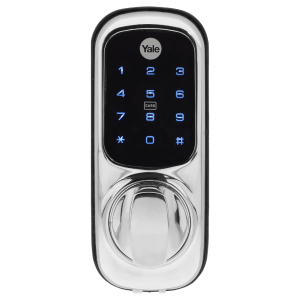How Do I Choose The Right Keyless Lock For My Needs?
Keyless locks have opened up many new practical opportunities for commercial businesses, as people try to improve security and convenience. Traditional locks which rely on keys have been found to be impractical, and are also prone to becoming worn and damaged through their need for a physical interaction. The fact that keyless locks remove the need for any physical contact means that keyless locks last longer and require less maintenance. But in terms of choosing the right keyless lock for your needs, this really comes down to the mechanism used to activate the lock and how that suits your business and its people.
But first of all let’s try and understand a little bit more about keyless locks.
What is a keyless lock?
A keyless lock uses the same locking mechanisms as traditional locks, but the difference is in how the lock is activated. With a traditional lock this is of course activated by the inserting and turning of a physical key. With a keyless lock, the user has a range of options for how they send a keyless signal to the lock which effectively tells the lock to open.
Types of keyless lock
The typical styles of keyless lock include:
- Mortice locks – cut into a small pocket in the door and using a latch and bolt system, which can be a pull and push mechanism or a lever handle mechanism
- Dead bolts – sleek and compact these sit above the door handle and consist of a bolt activated by the keyless signal
- Rim lock – these are most often used on metal doors and are paired with a bracket attached to the door frame.
The different activation methods for keyless locks
Generally speaking there are four different activation methods for keyless locks, these are:
- Keypads – the user inputs a unique code or number into a keypad at the door
- Card/Fob – the user flashes a physical card or fob at a sensor, which reads the signal and activates the lock opening
- Biometric – the user pairs a unique biometric feature with the system, such as a fingerprint, eye or face, which a camera scans and activates the system when recognised
- Smart – the user flashes their smartphone at a sensor and an app on their phone communicates with the locking system to open the door.
Which keyless lock is best for my needs?
There are many advantages to keyless locks and how they are activated, after you understand the fact that the physical locking method is exactly the same as for traditional locks. So physically, you are just as secure, but where keyless locks offer a huge advantage is in how you can control authorisation and who has access to the method of activating the lock. This is where one or more of the four different methods may be particularly suited to your requirements.
Keyless locks can be activated quickly, require no people to manage the system so are good for 24/7 operations, can have auto-locking mechanisms so a door is never left unlocked by accident, they last longer because there is no physical contact and offer many opportunities for integrating with other systems on site. But how do you know which method is best for you? Here are some pros and cons of each keyless lock activation method.
The pros and cons of different keyless locks
- Keypads – these are good for when you have to restrict access to certain areas, because a unique code can be kept secret and can be changed where necessary to maintain security. However, there is no way you can record who has knowledge of the code or number, you can’t prevent people sharing it. Also, if you have a lot of people to access quickly, such as a long line of people arriving at the same time, this method is slightly slower because you have to input a code, and somebody close behind a person could technically watch and memorise a code.
- Card/Fob – these are still physical items and hence are susceptible to being lost or stolen, but the system can be amended to make lost or stolen cards/fobs redundant, and new ones issued. This system is fast and the cards/fobs can’t be copied.
- Biometric – this offers a very high level of security because obviously this method can’t be copied, lost or stolen. This method is also very fast and easy to manage.
- Smartlocks – although people are very careful with their smartphones, this is still a physical method of activation, and hence could be lost or stolen, although the security built into the phone itself should prevent it being used by an unauthorised person. This method is also very fast, and hence is good for long lines or lots of people, and the big advantage of smartlocks is that the system can be integrated with other smart systems such as heating, fire alarms and HR attendance systems, allowing it to form a part of a centralised management tool.
Hopefully now you have learned much more about the different types of keyless lock and the advantages of each, and are now able to choose the right keyless lock for you, based on the size and the needs of your business.